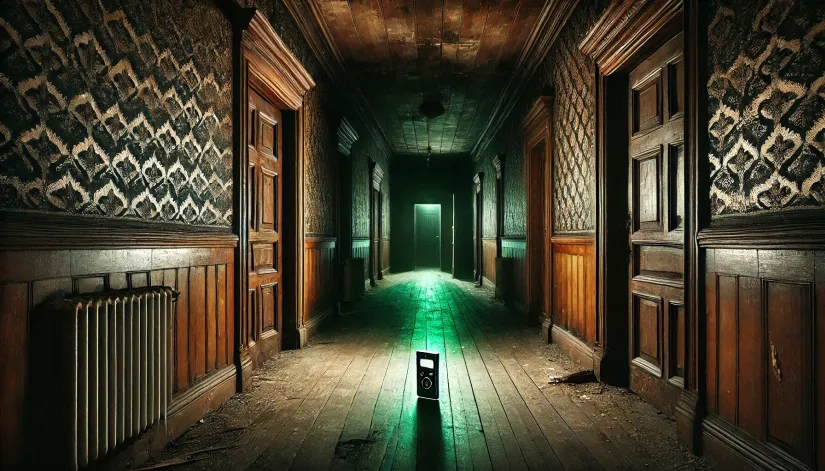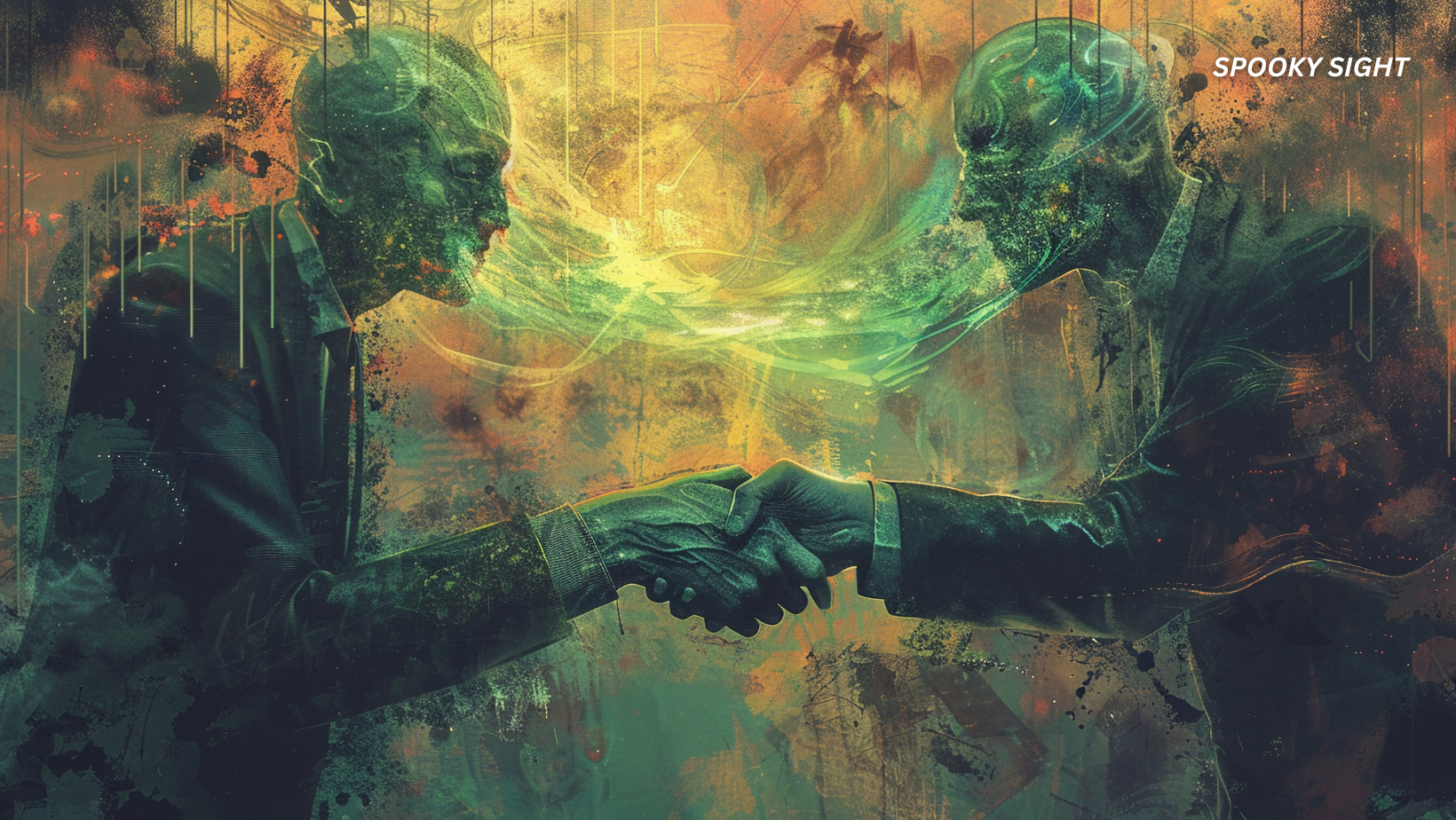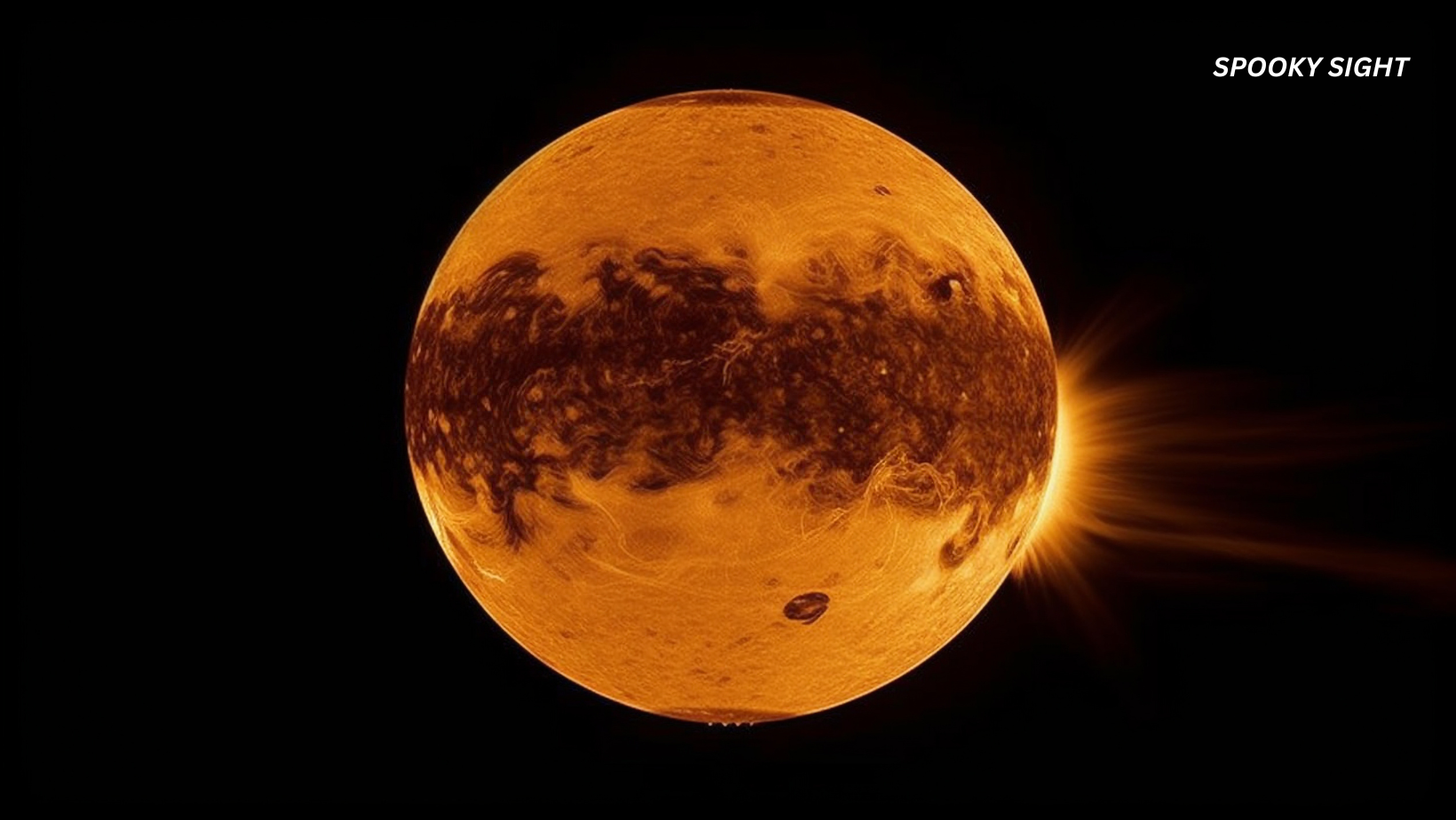The SpookySight team has probably used well over a dozen EMF ghost detectors. Some were great, others not so much.
Since so many of you asked about the Cornet ED88T ghost detector, we thought it might be a good idea to do our quick review of this highly talked-about device.
So, our team has put this EMF meter to the test in various locations (outdoor and indoor). And we’re excited to share our findings.
In this article:
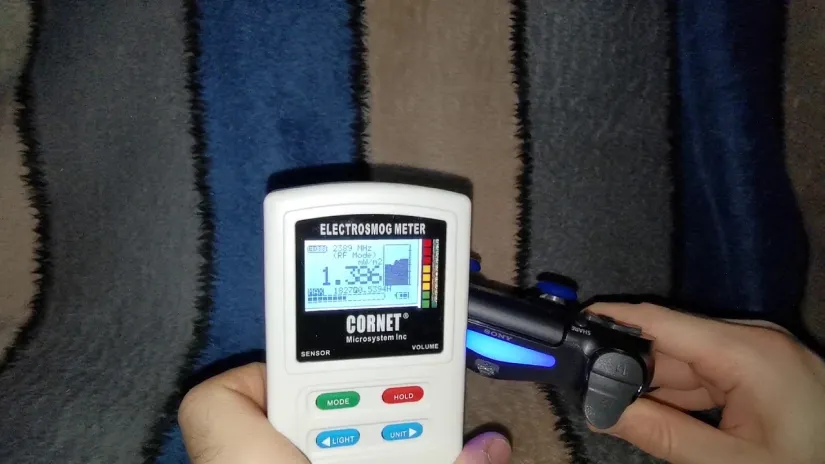
Why the Cornet ED88T Caught Our Eye
First off, the Cornet ED88T isn’t your run-of-the-mill EMF ghost detector. It’s marketed primarily as an electrosmog meter. Still, its impressive range of features quickly made us wonder how well it could perform in the paranormal field.
After all, detecting shifts in electromagnetic fields is a cornerstone of modern ghost hunting. Whether you’re using the Trifield TF2, K-II EMF Meter, Mel-8704R EMF Meter, or the Ghost Meter Pro, having a reliable EMF detector in your ghost hunting equipment kit is crucial.
ED88T, with its advanced capabilities, certainly deserves a closer look. So, does it live up to the hype?
Well, the newer ED88T model has some interesting features that can be useful for standard EMF detection. And could make a huge difference in catching potential paranormal manifestations, too.
As paranormal investigators, we were particularly interested in its broad frequency range, real-time data-logging capabilities, and advanced display options.
Cornet ED88T general features, specifications, and specific features for ghost hunting:
| Feature/Specification | Description |
|---|---|
| Frequency Range | 100 MHz – 8 GHz (RF); 50 Hz – 10 kHz (ELF magnetic fields); 50 Hz – 50 kHz (ELF electric fields) |
| Data Logging | Real-time data logging with intervals as short as 0.001 seconds |
| Display | LCD screen with real-time waveform visualization and statistical data |
| Sensitivity | -60 dBm to +5 dBm in RF mode; 0.1 uT to 60 uT in magnetic field mode; 10 V/m to 1000 V/m in electric field mode |
| Audible Feedback | Includes a sound feature to make signal modulation audible, useful in detecting specific RF sources during ghost hunting |
| Portability | Compact and lightweight (70 x 135 x 23 mm), easy to carry for long investigations |
| Battery Life | Uses 9V battery, with power management tips recommended for extended use |
| Waveform Display | Real-time waveform display allows users to visualize EMF signals, useful for identifying unusual activity |
| Logging Capability | Stores up to 25,000 samples per second, essential for capturing brief anomalies during paranormal investigations |
| Price Range | Typically around $169-$199, depending on the retailer |
Now, let’s break down these features in more detail:
Wide Frequency Range
The first thing that stands out about the Cornet ED88T is its wide frequency range. The device can easily cover 100 MHz to 8 GHz for RF and 50 Hz to 10 kHz for low-frequency fields.
What does this mean for ghost hunting? In theory, this broad spectrum should allow the ED88T to pick up on various EMF disturbances. Everything from everyday household electronics to unexplainable spikes (we typically associate with possible paranormal activity).
We tested the frequency in an old, abandoned building. Basically, we wanted to stay as far away as possible from any electrical interference. Old wiring and old-school tech can often interfere with EMF readings. We didn’t want that during our tests.
So, how did Cornet ED88T faired? Pretty good, actually.
In our tests, the meter picked up on a range of EMF disturbances. From subtle fluctuations in low-frequency fields to stronger RF signals that might typically go unnoticed with less sensitive equipment.
Real-Time Data Logging
A good EMF ghost detector should have real-time data logging. Cornet ED88T logs EMF readings with intervals as short as 0.001 seconds. For ghost hunters, this is huge.
How so? Because—more often than not—paranormal events happen in the blink of an eye. And an instrument that can capture these blinks can be invaluable.
Data and Audio Feedback
If you’re looking for something basic, the ED88T probably won’t be your top pick. This EMF meter goes all out with real-time waveform display and audible feedback (which can be overwhelming if you’re not used to it).
The waveform display lets you visualize EMF activity as it happens. Instead of just static numbers, you get a live feed of the fluctuations in the electromagnetic field.
But it doesn’t stop there. The ED88T also has a real-time statistics data window. That’s incredibly useful to break down the data even further. You can view the peak, average, and minimum readings.
The audio feedback is another plus. Hearing the EMF signals can be handy during investigations when you might not be able to constantly watch the display.
However, the combination of visual and audible data can feel like information overload. Some may not like it if they are not used to processing this much feedback at once.
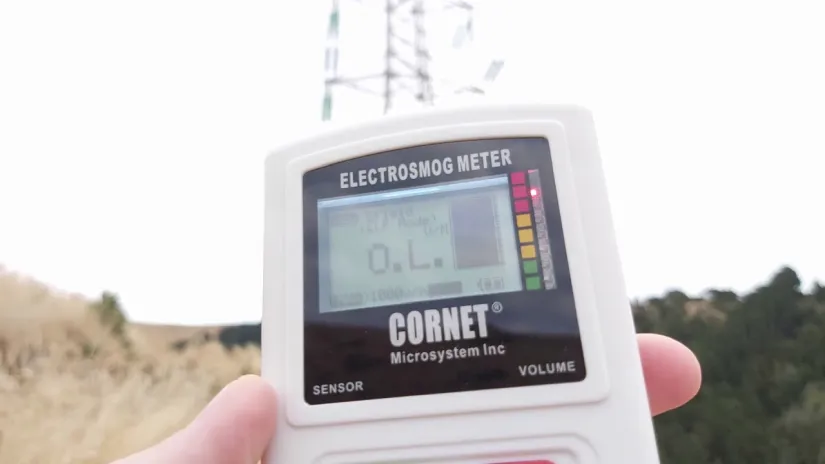
LCD Display
The LCD screen is a clear and well-organized interface that can pretty much display all the information at once.
The screen itself measures around 1.8 inches (which might seem small). Still, the high resolution makes all the details easy to read. Even in low-light conditions.
Cornet ED88T vs Previous Models
Of course, we wouldn’t be doing our due diligence without comparing the Cornet ED88T to its predecessors—the ED85EXS and the ED78S.
Let’s see how the latest model holds up:
Cornet ED88T vs. Cornet ED85EXS
Frequency Range: The ED88T takes the lead with a broader frequency range (100 MHz – 8 GHz) compared to the ED85EXS (which tops out at 6 GHz). This extra bandwidth is handy for detecting modern RF sources (including 5G signals).
Data Logging: Unlike the ED85EXS (which has no data logging), the ED88 T’s real-time ability to record EMF changes gives it a significant edge.
Display: The advanced display and waveform visualization in the ED88T is a significant upgrade over the more basic LCD of the ED85EXS.
Cornet ED88T vs. Cornet ED85EXS comparison:
| Feature/Specification | Cornet ED88T | ED85EXS |
|---|---|---|
| Frequency Range | 100 MHz – 8 GHz (RF); 50 Hz – 10 kHz (ELF magnetic fields); 50 Hz – 50 kHz (ELF electric fields) | RF: 100 MHz – 6 GHz; Limited ELF detection |
| Data Logging | Yes, real-time with intervals as short as 0.001 seconds | No |
| Display | Advanced LCD with waveform and statistics | Basic LCD, no waveform display |
| Sensitivity | High sensitivity, -60 dBm to +5 dBm in RF mode | Moderate sensitivity, narrower detection range |
| Audible Feedback | Yes, with detailed modulation sound | Yes, but less detailed |
| Portability | Compact and lightweight (70 x 135 x 23 mm) | Slightly larger but still portable |
| Waveform Display | Yes, real-time waveform visualization | No |
| Price Range | $169 – $199 | Typically lower, around $130 – $150 |
| Specific Use in Ghost Hunting | Excellent, due to enhanced features and sensitivity | Adequate, but less versatile and sensitive compared to the ED88T |
Cornet ED88T vs. Cornet ED78S
Design and Build Quality: One of the first noticeable differences between the ED88T and its ED78S predecessor is the overall design and build quality. The ED88T just feels better. It has a larger display, a more ergonomic grip, and a well-balanced weight distribution.
Frequency Range and Sensitivity: Unlike the newer model, the Cornet ED78S operates within a narrower RF range (capping at 6 GHz). Additionally, the ED88 T’s higher sensitivity (-60 dBm to +5 dBm in RF mode) can detect even faint EMF signals that the ED78S might miss.
Ease of Use: Both models are portable. The ED78S is more compact (which makes it easier to carry). However, this comes at the cost of fewer features and a less detailed user interface.
Cornet ED88T vs. Cornet ED78S comparison:
| Feature/Specification | Cornet ED88T | Cornet ED78S |
|---|---|---|
| Frequency Range | 100 MHz – 8 GHz (RF); 50 Hz – 10 kHz (ELF magnetic fields); 50 Hz – 50 kHz (ELF electric fields) | RF: 100 MHz – 6 GHz; Limited ELF detection |
| Data Logging | Yes, real-time with intervals as short as 0.001 seconds | No |
| Display | Advanced LCD with waveform and statistics | Basic LCD, no waveform display |
| Sensitivity | High sensitivity, -60 dBm to +5 dBm in RF mode | Moderate sensitivity, narrower detection range |
| Audible Feedback | Yes, with detailed modulation sound | Yes, basic sound feature |
| Portability | Compact and lightweight (70 x 135 x 23 mm) | Compact and portable, slightly smaller than ED88T |
| Waveform Display | Yes, real-time waveform visualization | No |
| Price Range | $169 – $199 | Typically lower, around $120 – $140 |
| Specific Use in Ghost Hunting | Excellent, due to enhanced features and sensitivity | Basic, may miss more subtle EMF anomalies |
Accessories
The Cornet ED88T is already a decent device. But you can pair it with additional accessories to help you during your investigations.
Here are some accessories that we at SpookySight recommend to get the most out of your Cornet ED88T:
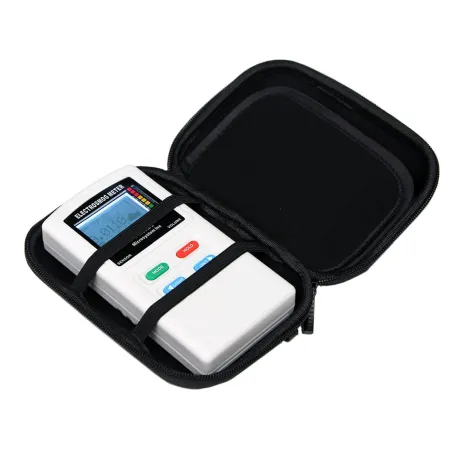
Protective Cases
Hard Shell Zipper Case
Why You Need It: The Cornet ED88T is a compact and portable device, but it’s also an investment you want to protect. A hard shell zipper case can protect against bumps, drops, and scratches.
SpookySight Tip:
The Safe Living Technologies Hard Shell Case is an excellent match for the ED88T. It’s specifically designed for this model. So, it’s a perfect fit. Plus, the case is FREE if you buy the device from Amazon.
Water-Resistant Cases
Why You Need It: A water-resistant case is a must if you’re planning to conduct investigations in damp or potentially wet environments (think old, leaky buildings or outdoor locations). It protects your device from moisture, which could otherwise lead to malfunctions or damage.
SpookySight Tip:
Look for cases like the Pelican Micro Case. It’s a smartphone waterproof case, but it’s large enough to keep your ED88T safe, too.
Extra Batteries
9V Rechargeable Batteries
Why You Need Them: The Cornet ED88T runs on a 9V battery. And while it’s pretty efficient, long investigations can drain power quickly. So, you may need some extra batteries. We prefer rechargeable batteries since they are more eco-friendly and cost-effective in the long run.
SpookySight Tip:
Any brands will do the trick, really. We like Energizer or Duracell 9V rechargeable batteries. Pair them with a fast charger.
Portable Battery Packs
Why You Need Them: It’s optional. They are typically useful only if you’re planning a long ghost-hunting expedition.
SpookySight Tip:
We like the Anker PowerCore series. Very popular, reliable, and built to last.
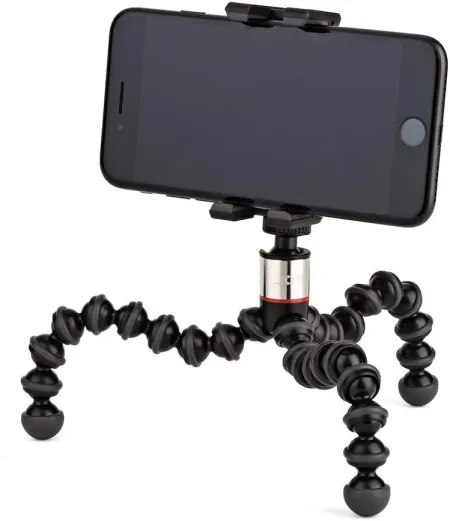
Mounts and Supports
Tripod Mounts
Why You Need It: For accurate readings. Especially over extended periods when keeping your EMF meter stable is crucial. A tripod mount lets you position the device in a fixed location for more consistent readings.
SpookySight Tip:
The JOBY GripTight ONE GP is a versatile tripod that works well with small devices. It’s also very flexible, perfect for uneven surfaces.
Magnetic Holders
Why You Need It: A magnetic holder can be incredibly useful in environments where a tripod might not be feasible. Simply use the holder to attach your device to metallic surfaces.
SpookySight Tip:
Neodymium magnetic mounts are strong and reliable.
External Data Logging Accessories
USB Cables and Adapters
Why You Need Them: The Cornet ED88T can log a vast amount of data, but you’ll need to transfer this data to a computer for detailed analysis. You don’t need anything fancy here, but we recommend a high-quality, fast USD cable for larger amounts of data.
SpookySight Tip:
Any USB-A to USB-B cable should work fine. Shielded cables typically last for longer and reduce potential data transfer issues.
Portable Storage Devices
Why You Need Them: Flash or external hard drives can offer some extra space you may need to back up and store your findings.
SpookySight Tip:
The SanDisk Extreme Portable SSD is a robust, high-speed external drive perfect for securely storing large amounts of data.
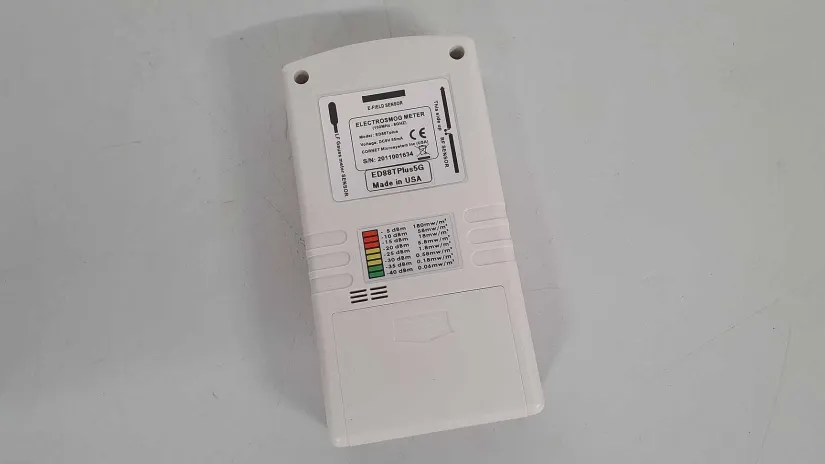
Troubleshooting and Common Issues
Even with a reliable tool like the Cornet ED88T, you might encounter a few hiccups along the way.
Here’s how to troubleshoot some of the most common issues:
False Positives
False positives can often be caused by electronic devices, wiring, or even your own ghost hunting equipment.
Before assuming an EMF spike is paranormal, check your surroundings for common culprits like Wi-Fi routers, cell phones, or other electronics.
A good practice is to do a baseline sweep of the area before starting your investigation to identify and account for these sources.
Device Sensitivity
The latest Cornet model is highly sensitive—which can be a double-edged sword. It might pick up on very faint EMF signals that aren’t necessarily related to paranormal activity.
If you’re getting too many small readings, consider adjusting the device’s sensitivity settings (if available) or changing your position in the room. Moving away from known EMF sources can help filter out unnecessary noise.
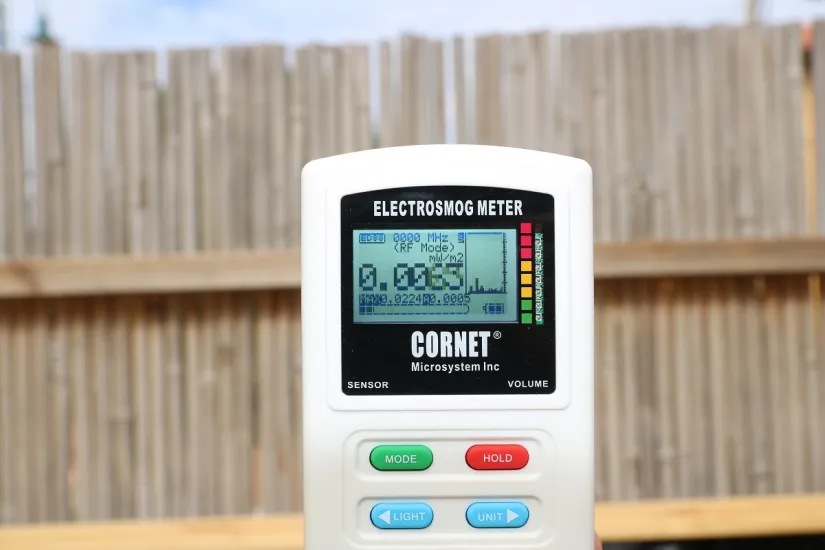
Cornet ED88T review: Pros and Cons
Pros
- Wide Frequency Range: Covers a broad spectrum, including modern 5G frequencies. Great for ample EMF detection.
- Real-Time Data Logging: It can capture quick spikes in EMF.
- Advanced Display Features: The real-time waveform and audible feedback make it easier to identify and interpret EMF activity.
- Portability: Compact and lightweight. Ideal for carrying around during extended investigations.
- Versatility: Can be used in pretty much every type of environment. From old buildings to outdoor locations.
Cons
- Sensitivity: While high sensitivity is a pro, it can also be a con if it leads to overwhelming false positives, especially in areas with lots of electronic interference.
- Learning Curve: The advanced features and data logging capabilities might require some time to master (particularly for those new to using EMF meters).
- Price: While reasonably priced for its features, it may be a bit steep for casual users or those just starting in ghost hunting.
Price
The Cornet ED88T is a mid-tier option that can cost anywhere from $169 to $199, depending on the retailer and ongoing offers.
Conclusion
In wrapping up our Cornet ED88T ghost detector review, we at SpookySight can confidently say this device is a solid EMF reader.
That said, the Cornet ED88T does come with a few caveats. Its high sensitivity to non-paranormal EMF sources can lead to more false positives. Plus, there’s an initial learning curve to mastering all its features.
But is it better than other, more popular EMF ghost detectors? It depends on what you want from a device like this. Or if the price is a decisive factor for you.
For example, for those who prefer a more straightforward, plug-and-play experience, something like the Mel-8704R might be more appealing. Trifield TF2 excels in user-friendliness, and the K-II is probably the most used EMF meter due to its straightforward operation.

